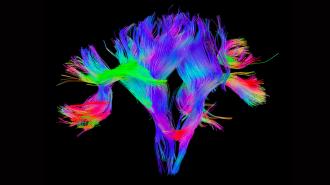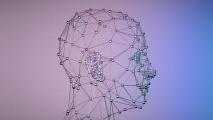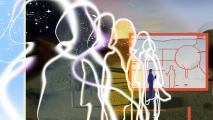Exactly how, and how much, the unconscious processing of information influences our behavior has always been one of the most controversial questions in psychology. In the early 20th century, Sigmund Freud popularized the idea that our behaviors are driven by thoughts, feelings, and memories hidden deep within the unconscious mind — an idea that became hugely popular, but that was eventually dismissed as unscientific.
Modern neuroscience tells us that we are completely unaware of most brain activity, but that unconscious processing does indeed influence behavior; nevertheless, certain effects, such as unconscious semantic “priming,” have been called into question, leading some to conclude that the extent of unconscious processing is limited.
A recent brain scanning study now shows that unconsciously processed visual information is distributed to a wider network of brain regions involved in higher-order cognitive tasks. The results contribute to the debate over the extent to which unconscious information processing influence the brain and behavior and led the authors of the study to revise one of the leading theories of consciousness.
Unconscious processing
Ning Mei and his colleagues at the Basque Center on Cognition, Brain, and Language in Spain recruited 7 participants and showed them visual images while scanning their brains with functional magnetic resonance imaging (fMRI). Half of the images were of living things, and the other half were of inanimate objects. All of them could be grouped into ten categories, such as animal or boat. The participants viewed a total of 1,728 images, presented in blocks of 32, over a six-day period, each with a one-hour scanning session.
Having determined the brain activity pattern associated with each image, the researchers then presented the same images for shorter periods of time in the subsequent trials. In some, the images were presented for 47 milliseconds (ms, thousandths of a second), giving the participants a clear perceptual experience of them. In others, they were presented for 38 ms, just enough time for them to catch a glimpse of the images. And in yet others, they were presented for 25 ms, in which case they did not enter the participants’ conscious awareness.
Even when the images were presented for the briefest periods of time, and the participants failed to recognize their contents, their brain activity patterns contained enough information for the researchers to classify the images as animate versus inanimate objects. In other words, unconscious processing contained meaningful information about the images, which became accessible to higher-level stages of processing.
The authors say that their findings, which are published in the journal Nature Human Behavior, suggest that mental representations of conscious and unconscious information overlap in some regions of the visual pathway, and also that they suggest global workspace theories of consciousness need to be revised.
Global workspace theory of consciousness
Global workspace theories state that conscious awareness arises when a large-scale central network hub of brain structures in the frontal and parietal lobes “broadcasts” information to make it available to other neural systems involved in cognitive processes such as attention, language, and working memory. Thus, different types of information are processed in their relevant local domains, and only enter conscious awareness if they are first received, and then shared by, the central hub.
This article was reprinted with permission of Big Think, where it was originally published.






